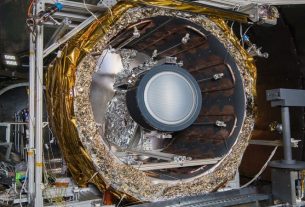South Korea recently managed to maintain a fusion plasma at 100 million degrees Celsius for twenty seconds in its experimental reactor. This is a record, and one more step towards mastering nuclear fusion, developed by the Sun.
For several years, several countries armed with their greatest engineers have turned to a source of energy: nuclear fusion. This is the process by which two atomic nuclei come together to form a heavier nucleus. This reaction, at work in the Sun and most other stars in the Universe, releases a colossal amount of “clean” and almost “unlimited” energy.
On paper, the idea would therefore be to master this process here on Earth, but on a smaller scale. This is accomplished by heating gaseous hydrogen gas to over 100 million degrees Celsius until it forms a plasma cloud. This cloud must then be controlled with super strong magnets long enough for the atoms to fuse together and release energy.
A new record
In recent years, some experimental reactors have succeeded in raising temperatures enough to obtain plasma. The most complicated however (everything is complicated in this type of technology) is to keep this cloud in this state. In this sense, a new step has just been taken.
On November 24, the Korea Superconducting Tokamak Advanced Research (KSTAR), a Korean experimental superconducting fusion reactor, indeed set a new world record by successfully maintaining the plasma at high temperature for twenty seconds with an ion temperature above 100. million degrees Celsius. By comparison, this is more than seven times the temperature at the center of the Sun.
The announcement was made by the KSTAR Research Center of the Korea Fusion Energy Institute (KFE), which is conducting the experiments as part of a joint research with Seoul National University (SNU) and Columbia University in the United States.
So far, this reactor had only managed to maintain such a temperature for eight seconds during its 2019 campaign. In its 2018 experiment, KSTAR had for the first time reached the plasma ion temperature of 100 million degrees. for about 1.5 seconds.
“An important turning point”
To achieve these new results, KSTAR officials say they have improved the performance of the Internal Transport Barrier (ITB) mode. “The technologies required for long operations of maintaining the plasma at 100 million ° C are the key to the realization of fusion energy,” said Si-Woo Yoon, Director of the KSTAR Research Center at KFE. “KSTAR’s success in maintaining plasma at high temperature for twenty seconds will be an important turning point in the race to secure technologies for high performance plasma control.”
KSTAR plans to share its main experimental results for 2020 at the IAEA Fusion Energy Conference in May 2021. In parallel, the researchers are continuing their work, with the final goal of KSTAR being to maintain continuous operation for 300 seconds with an ion temperature above 100 million degrees by 2025.




